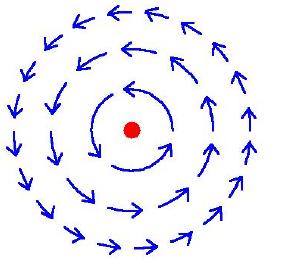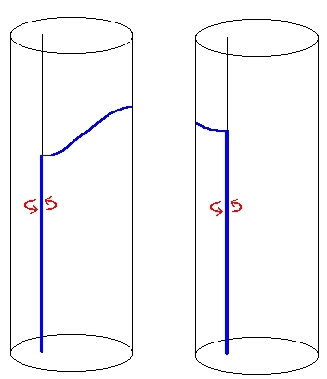Measuring Single Superfluid Vortices
Our rotating 3He refrigerator is set up for experiments on vortices in superfluid 4He. We are
interested in tracking a moving vortex, observing its response to various perturbations, and
ultimately studying how regular single vortex motion can change to turbulent flow.
If, after rotating the refrigerator to create a vortex, we stop rotation, the vortex may remain
on the wire. This is a metastable state, with higher energy than if the fluid were stationary.
However, since circulation is quantized the vortex cannot simply slow to a stop, as it would in a
classical fluid. Instead, one end can free itself from the wire and terminate instead on the
cell wall. The flow field of the trapped vortex then pushes the free end around the cell.
The motion dissipates energy, and the attachment point gradually moves along the wire until the
trapped vortex is gone.

We observe this vortex precession because the wire is not perfectly centered in the container.
As a result, the free end of the vortex changes length as it moves around the cell. The energy
associated with the free vortex, which is proportional to the vortex length, oscillates. To
compensate, the attachment point also oscillates, changing the length of the trapped vortex.
This alters the average circulation around the wire, which we detect in our measurements of the
normal modes.
For further reading
a thorough description of how a wire's vibration responds to trapped circulation is given in
"Observation of quantized circulation in superfluid helium," S.C. Whitmore and W. Zimmermann, Jr.,
Phys. Rev. 166, 181 (1968).




